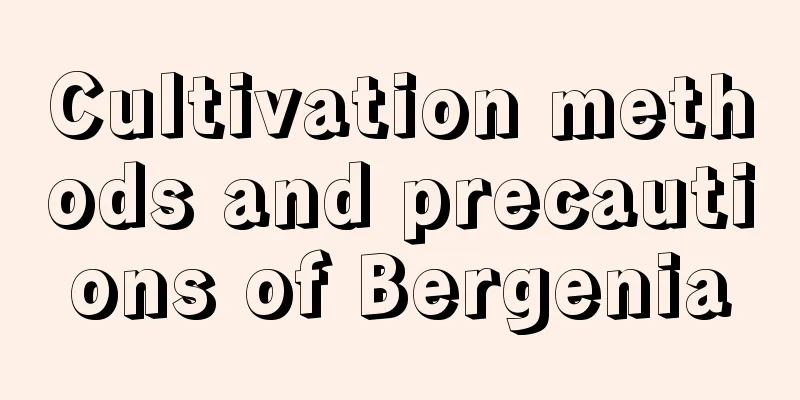Cultivation methods and precautions of Bergenia

1. Maintenance methods1. Substrate selection: The growing environment of rock cabbage is very special. It generally grows in mountainous areas. It is not very demanding on the soil, but loose and breathable soil is more suitable for its growth. 2. Temperature management: Rock cabbage has weak cold resistance. In autumn and winter, the temperature cannot be lower than 10 degrees Celsius. 3. Water management: It needs a lot of water during the growth period, and should be watered in time after fertilization. In summer, watering is needed once a day to promote root growth. 4. Light management: Rock cabbage is a shade-loving plant, and it is healthier when grown in shade than in the sun. Especially in summer, avoid direct sunlight. 2. Breeding techniques1. Sowing: The germination rate of seeds is highest in spring. Seedlings sown in spring grow faster and reach the five-leaf stage 10-20 days faster than in summer and autumn. This is due to the stronger vitality of spring seeds. Once the seeds are prepared, just sow them in the soil. 2. Cutting: After processing the rhizomes, cut and plant them in the seedbed. The rhizome cuttings of rock cabbage are easy to survive. The survival rate of cuttings in spring, summer and autumn is an average of 97.2%. 3. Problem diagnosis and treatment1. Root rot: Root rot is very likely to occur in thick soil with little oxygen, so during the breeding process, the soil must be kept loose and breathable. 2. Pests: Brown spots and aphids are common hazards, so during the breeding process, careful care should be taken to avoid pests. Aphids can be killed by spraying 1000 times diluted 2.5% dernet espresso emulsion. IV. Other issues1. Is it toxic: Rock cabbage is a non-toxic plant and is beneficial to changing the indoor air environment. 2. Can it be grown at home? The leaves of rock cabbage are emerald green and its flowers are beautiful, making it very suitable for home cultivation, and it would be best to make it into a potted plant. |
<<: Cultivation methods and precautions of bear's paw wood
>>: Breeding methods and precautions of pineapple
Recommend
How to propagate cyclamen
Select the parent Healthy plants should be select...
How many years has the red light cherry produced fruit?
Introduction to planting red light cherry fruit R...
How to grow Dendrobium in autumn
1. Change the watering method In autumn, you can ...
How often should I water the crabapple? It is better to water it every few days.
How often should you water the crabapple? Begonia...
Does the mage prefer yin or yang?
Does the mage prefer yin or yang? The Master Plan...
Difference Between Pineapple and Pineapple
1. Different leaf shapes Maybe many people think ...
How to propagate boxwood and what to pay attention to
Boxwood propagation method The common propagation...
How to water Chlorophytum comosum
The plant's water requirements In general, it...
How to Vernalize Hydrangea
Hydrangea is native to central and southwestern C...
How to solve the problem of yellowing leaves of lucky bamboo
1. Open windows for ventilation Reason: Lucky bam...
How to Identify Wax Flowers
1. Tree shape Wax flower is a perennial, fast-gro...
What to do if the tulip bulb rots?
How to solve the rot of tulip hydroponic bulbs Me...
What to do if golden sedge grows too long
The elongated appearance The golden sphenanthe in...
How to grow the fragrant vine in winter
1. Maintain a warm environment When growing sweet...
What fertilizer is good for lemon trees?
What fertilizer to use for lemon trees Lemon like...









